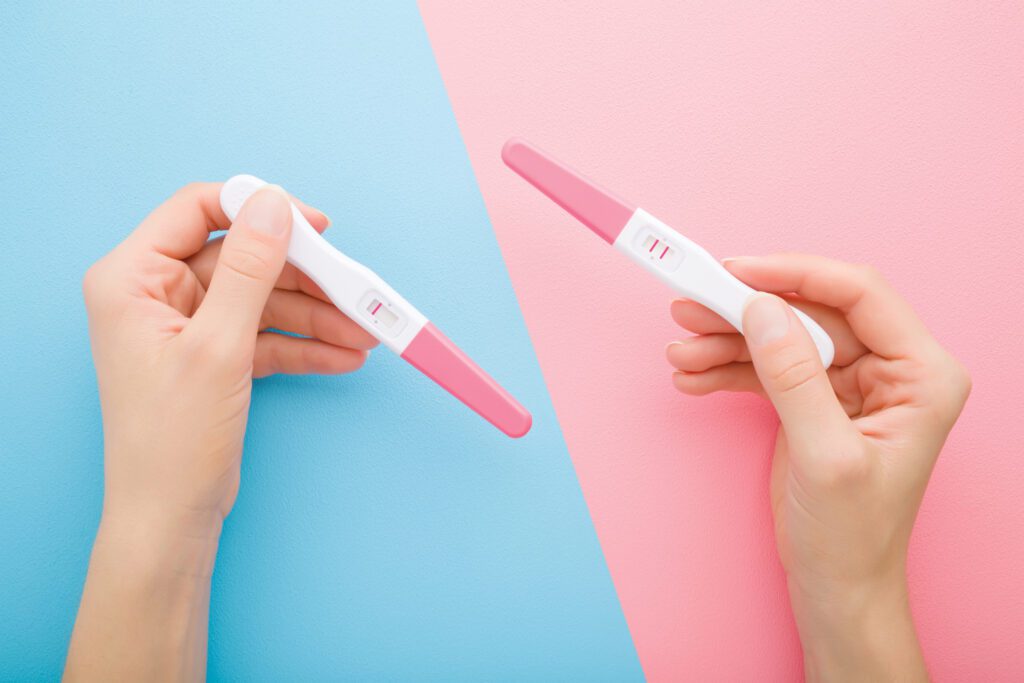Pregnancy is supposed to be one of the most exciting times in a couple’s journey. Unfortunately, it’s not always as easy to conceive as it seems in the movies. Couples can try for months or even years without success, and that pressure and stress can take a dramatic toll on relationships and wellbeing. For 12% of the population, infertility is all too real – so why do so many struggle in private? A lack of knowledge about the condition can leave many feeling uncomfortable discussing it, even though 1 in 8 couples is facing the same battle. Read on to learn the specifics about infertility, along with the options available to you.
Defining Infertility

While the term infertility is well known, its definition is less so. Many know that it means a woman is unable to get pregnant, but what are the specific parameters? Dr. Jessica Scotchie, a reproductive endocrinology and infertility physician with Tennessee Reproductive Medicine, explains, “Assuming that a woman is having regular, predictable menstrual cycles, infertility is defined as the inability to conceive after 12 months of attempted conception for women under 35, and after six months of attempts without conception for women over 35.”
What Causes It
In any given month, a couple attempting to get pregnant has about a 15-20% chance of conceiving a child. If certain issues are present, those chances can drop substantially. According to Dr. Scotchie, there’s not one specific cause, but rather a number of circumstances that can lead to infertility. “A combination of problems can be associated with infertility including ovulation problems, anatomical issues, sperm production issues, and more.”
Some of the most common causes of infertility include:
Polycystic Ovarian Syndrome (PCOS)
The Centers for Disease Control & Prevention reports that PCOS is the most common cause of infertility in women. Caused by a hormonal imbalance that results in small cysts developing on the ovaries, this condition affects ovulation and can lead to irregular periods or even a lack of periods. And while as many as 10% of women of childbearing age have PCOS, fewer than half are diagnosed.
Endometriosis
A painful disorder for many of those affected, endometriosis is a condition in which tissue that lines the uterus grows in places outside of the uterus, most commonly behind the uterus but also in the fallopian tubes or ovaries. The condition affects fertility in many ways, causing inflammation and sometimes tubal blockage. It can be difficult to diagnose because sometimes the only symptom is infertility, as not all women with the condition have pain. Endometriosis is diagnosed surgically, and removing it can improve fertility. Younger women who have endometriosis are likely to have an easier time conceiving than older women, since their eggs are younger and healthier.
Being 35 or Older
Getting pregnant becomes increasingly difficult with each passing year, especially once you hit 35. This is because a woman is born with all the eggs she’ll ever produce. As she ages, she’ll lose eggs, and those that she still has can lose quality. “There is a huge difference in a 35-year-old egg and a 40-year-old egg,” Dr. Scotchie explains. For women in their 20s, many of the eggs are still healthy and normal, whereas approximately 80-90% of the eggs of women in their 40s are abnormal.
Unhealthy Body Weight
Being overweight or underweight can affect a woman’s chances of getting pregnant too. Successful ovulation is closely tied to a woman’s estrogen levels. In someone who is overweight, her body may produce more estrogen than the body needs, which can prevent regular ovulation. On the flipside, a woman who is underweight may not produce enough estrogen, which can also inhibit regular ovulation or stop her periods altogether.
Male Infertility
As many as half of all cases of infertility can be caused by male factors like low sperm production, immobile sperm, or blockages that can prevent proper sperm delivery. These issues can be caused by illness, injury, or lifestyle, or a man may be born with problems that affect his sperm.
Unknown Causes
According to Dr. Scotchie, “About 15% of patients’ infertility is unexplained.” In these situations, fertility tests will likely come back normal or with only minor abnormalities. Having unexplained infertility does not mean nothing is wrong – there are components about fertility that are impossible to test in a woman (such as fertilization and embryo development). Even in these cases, treatment is highly effective for most couples.
Fertility Testing & Diagnosis
When a couple suspects infertility issues, the first step is talking with your doctor. He or she will likely recommend you to a fertility specialist who can explain your options. “A lot of people are scared to take that first step because they think it automatically means they’ll have to do IVF (in vitro fertilization),” says Dr. Scotchie. “In reality, it’s just a simple conversation to help you understand your body and what may be causing a delay in conception.”
The specialist will complete a thorough medical history with both parties, looking to gain insight into frequency of menstrual cycles, degree of associated pain, additional medical issues, and family history.


From there, blood and urine tests can be done to make sure the woman is releasing an egg each month, followed by an ultrasound to look for abnormalities, and a semen analysis for the husband.
A second consultation will be scheduled to discuss the results, underlying causes, and treatment strategies available based on the time required, level of risk, and cost.
“Anyone, no matter the age, trying to conceive for more than 12 months without success should absolutely have a conversation with their doctor,” says Dr. Scotchie. She also recommends women 35 or older consider testing after six months of unsuccessful attempts. “A woman with any history of endometriosis, irregular cycles, fibroids, polyps, or cysts should really have a conversation with their doctor before they even try to conceive to be proactive,” she adds.
Options & Advancements
For couples facing infertility, there are a range of treatment options available to them depending on their particular medical and financial situation. “Treatments can range from anything as minimal as a medication for the woman to stimulate ovaries to release more eggs; to IVF, in which a woman’s eggs are extracted, fertilized by sperm in a laboratory to create an embryo or embryos, and then the embryo is transferred to the uterus; to third-party reproduction, which includes egg donors, sperm donors, embryo donation, and gestational surrogacy,” explains Dr. Scotchie. Options vary widely depending on a patient’s history, age, and more.
In the last decade, medical advancements have continued to improve infertility treatments. One such advancement centers around the concept of preimplantation genetic screening, or PGS. Dr. Scotchie explains, “We can now screen the chromosome health of an embryo before implanting it into the uterus. This helps us see certain genetic diseases or disorders and allows us to be increasingly conservative with the embryos we implant.” With PGS, embryos will be screened to identify if they have the normal number of chromosomes.
A second, related advancement is called preimplantation genetic diagnosis, or PGD. With this, a patient with known or suspected genetic defects can be tested for gene disorders along with their partner. Then, once embryos are created, they can be biopsied and diagnosed to avoid passing along significant health problems to the child. For instance, this process can help a woman who carries the BRCA1 mutation (a breast-cancer-causing genetic mutation) avoid passing it to her child.
Fertility preservation options have also seen incredible improvement over the last 10 years. Today, for instance, a woman who is in her 20s or early 30s and is facing something like cancer, which can destroy the egg supply, has the opportunity to freeze her eggs early. Then, following treatment, they can be unfrozen for IVF. That way, even though she’s older, she can still use her younger, healthy eggs.
While the decision to seek treatment is extremely personal, remember that support is always available.“Stay open to options you may not have initially considered and seek support during the process,” reminds Dr. Scotchie. “We’re fortunate to be in a time in medicine where we have access to incredible knowledge and technologies that can help the vast majority of patients achieve their dream of becoming a parent.”


Dr. Jessica Scotchie
Reproductive Endocrinology and Infertility Physician, Tennessee Reproductive Medicine

